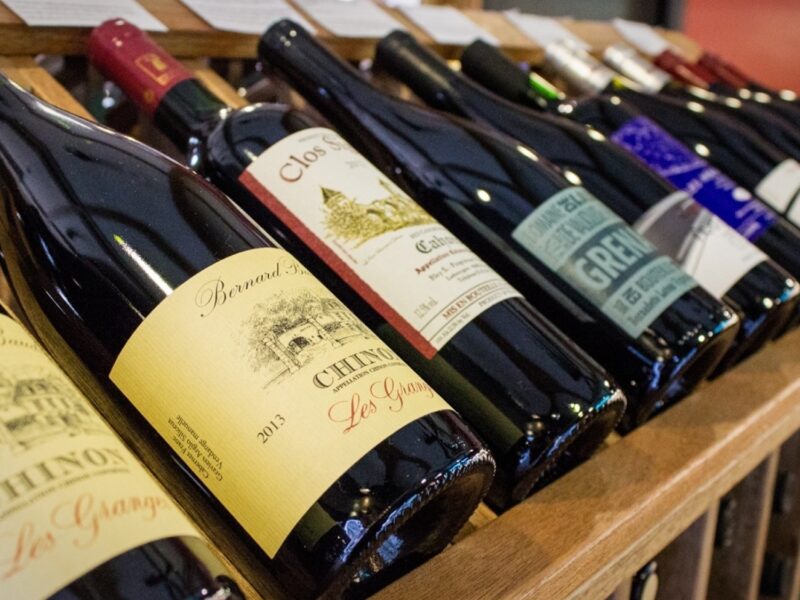
Wine Packaging: What Factors Are Driving The Shifting Trends In Wine Packaging?
Wine arouses passion in winemakers and sommeliers, world-famous wine writers, and ordinary individuals who enjoy a glass with dinner or have a bottle or two on hand.
Wine needs to be kept from oxygen, whether it’s a famed vintage from a bygone era purchased at auction or a cheap selection grabbed from a display near the cash checkout for a quick midweek supper or Sunday picnic. This is due to the packaging, and while the packaging may not elicit the same level of emotion as the wine inside, many individuals have strong feelings about how the wines they drink are packed.
Even while any container can be used, in most nations that packaging will be a glass bottle. Most wines can be safely stored in cans, pouches, aseptic cartons (Tetra Paks), plastic bottles, and bag-in-box containers. The majority of wine is made to be consumed within two years after its production. Those younger wines can be neatly packaged in a container or a bag.
Beverage packaging is a materials-intensive enterprise, with steel, aluminum, glass, and plastics all finding a place in the market. The cost of materials, processing, customer expectations, flavor retention, corrosion resistance, environmental impact, and other factors all go into the ultimate package decision. Alcoa Research Lab that aluminum was being investigated as a competitor to steel for soft drink cans. This can come as a surprise to some because the cost of aluminum has always been several times that of steel on any basis. Customers’ acceptance and the recycling of used beverage containers, on the other hand, have shifted the economics in aluminum’s favor.
The question therefore arises that in spite of such a wide variety of choices, why are glass bottles still the most popular container type decades after they were first introduced?
Well, the 300-year head start that bottles have has a lot to do with it, because when it comes to wine, tradition still matters a lot. The majority of people believe that wine should be served in a stemmed glass and come from a corked bottle. Glass bottles, regardless of whether they’re sealed with a cork, a screw cap, or a synthetic stopper, perform an excellent job of protecting wine. Even though the barrier characteristics of plastics have improved, glass is still the best solution for sparkling wines or wines that will be stored for a long time.
Most consumers feel so strongly about wine packaging that it is surprising that there are now Al wine containers on the market. Some Australian vineyards are marketing chardonnay, cabernet and shiraz-sauvignon in 250 mL cans with ring-pull tabs. A lacquer coating is applied to the inside of the can. If the lacquer coating is defective, some wine and soft drinks containing citric acid will erode through the aluminum in less than an hour. The cans are said to have a five-year shelf life and are useful when a single or two-glass serving is desired. According to the providers, aluminum can prevent wine spoiling due to oxidation and cork taint, eliminating the need for added preservatives. In comparison to glass bottles, the light weight and compact design reduce transportation expenses. The aluminum can is threatening to replace the glass bottle at the same time that the aluminum bottle is threatening to replace the aluminum can. More robust customers would like the impact-extruded aluminum container with a neck and screwcap seal. A winemaker in the United States is offering aluminum screwcaps for wine in glass bottles that will be consumed within six months. The ‘boxes’ storing wine in polymer bags have also improved, allowing for the packaging of finer wines, but they are still unsuitable for long-term preservation.
The battle for the best wine-packaging materials doesn’t end with the container. Due to rising costs and dwindling supplies from Spain’s cork trees, traditional natural corks are being replaced by composite and polymer plugs. Lead was required to be removed from the closure caps on the tops of glass bottles in the early 1990s. Tin and an aluminum-polymer laminate were investigated as substitute materials. Because of their high price, tin closing caps are only used on high-end wines, liquors, and champagne.
What’s driving this shift away from glass bottles, which perform a great job and have a lot of built-in market advantages?
The wine packaging mix is evolving, albeit slowly. While glass bottles are the most common packaging choice in most nations, there is considerable regional variation in packaging preferences. Consumers in China are adamant about the “traditional wine experience,” which comprises wine (typically French, generally red) in a glass bottle sealed with a cork. Much of Australia’s wine is marketed in bags-in-boxes (or “casks”) for the domestic market, and the wine that is bottled is usually under a screw cap. Meanwhile, “Old World” countries such as France and Italy take a more pragmatic approach, favoring traditional packaging for finer vintages and wines destined for export markets while employing plastic bottles and bags-in-boxes at home for everyday reds and whites. The United States has been sluggish to accept innovative packaging formats in the past but is now warming to the idea of wine in a box or under a screw cap.
Glass bottle wines are generally more expensive than other packing solutions, and pricing is something that almost everyone considers. Glass bottles are also bulky and costly to ship. Plus, if you’re not nice to them, they’ll break. Empty boxes and cartons, on the other hand, are lighter, don’t break, and can be shipped flat. That isn’t to suggest that glass bottles aren’t environmentally friendly: they’re recyclable, and manufacturers have begun to offer lighter-weight bottles.
Other ideas around wine are also evolving. Winemakers at the Estevez vineyard in southern Spain are playing music to the sherry casks in storage as a further ‘scientific’ nuance to wine creation. The researchers want to see if the sherry-aging yeast responds better to music that is based on its own DNA. A piano-playing microbiologist at a Madrid hospital has arbitrarily assigned tones from the do-re-mi scale to the four building blocks of DNA’s double helix, resulting in music. It’s too soon to make a definitive judgment, but there are clues that the yeast cells floating to the top of the wine casks to protect against the destructive effects of air are better organized. If the yeast cells that convert sugar to alcohol are impacted by environmental elements like temperature and humidity, and the cells are just as alive as musically vulnerable humans, music might be a good way to keep the yeast happy and productive.
Source URL: https://www.reportsanddata.com/report-detail/wine-packaging-market





No Comment